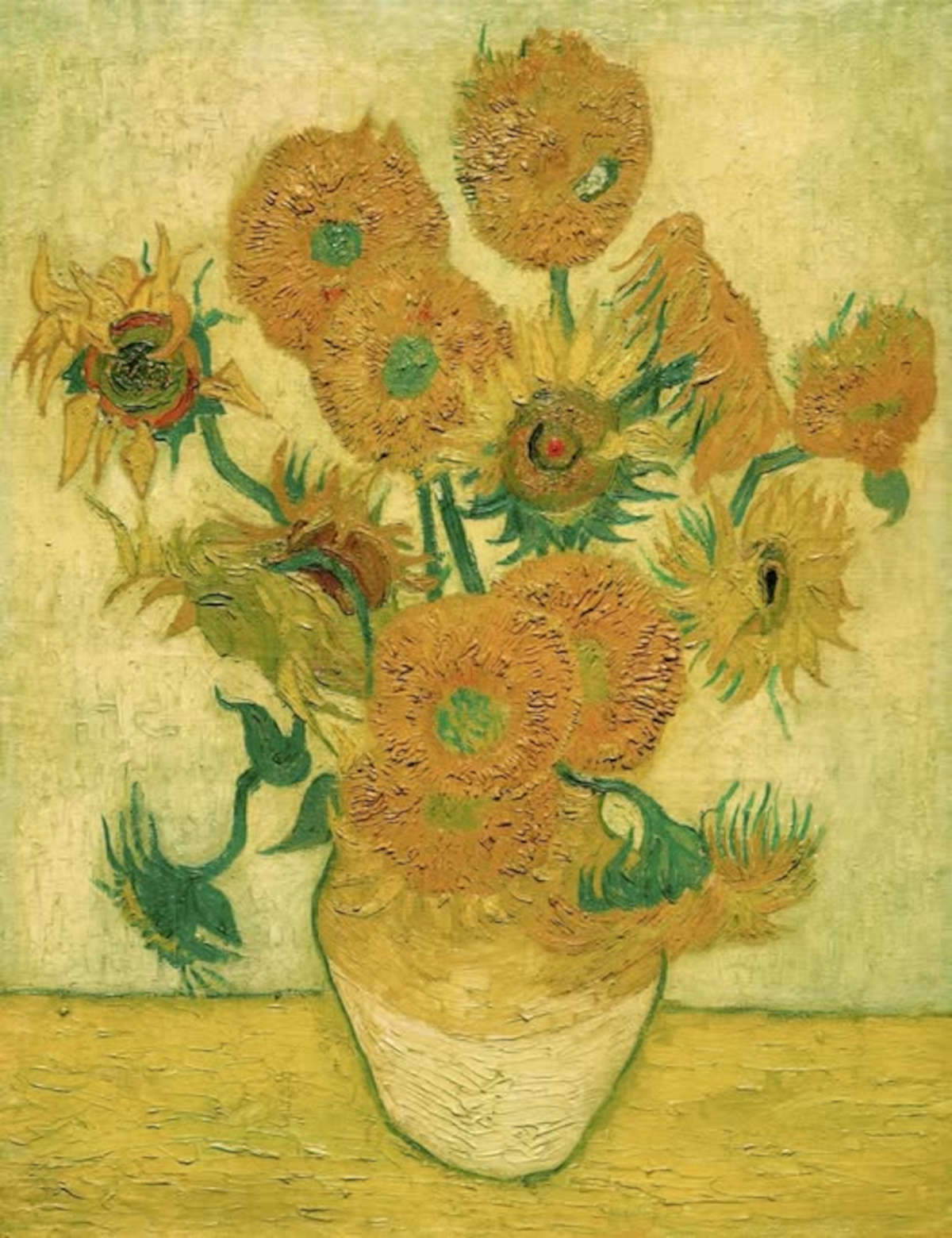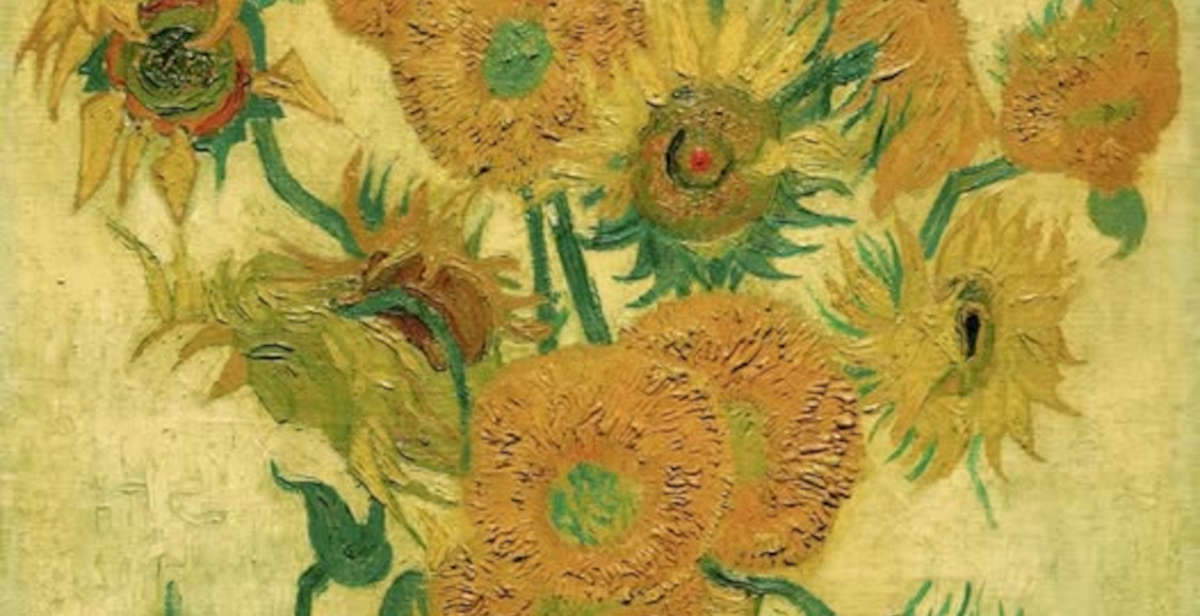One of the versions of Vincent van Gogh ’s Sunflowers (Zundert, 1853 - Auvers-sur-Oise, 1890) is at the center of an international dispute: it is one of the six canvases (originally seven, one was destroyed) belonging to the Arles series, specifically the one preserved in Tokyo, Japan, at the Sompo Japan Museum of Art, the museum of the Sompo insurance company that owns the work. The story actually began in 2022, when the heirs of one of Germany’s greatest collectors of the 20th century, Paul von Mendelssohn-Bartholdy, sued Sompo in hopes of having their rightful ownership of the work, which they allege was wrongfully sold under pressure from the Nazis. This week, the case landed before the judges of the Seventh Circuit in Chicago.The U.S. Courthouse News Service, which specializes in court reporting, broke the news.
The heirs claim that the painting was given away only to escape Nazi persecution and demand that it be returned. The lawsuit, filed against the Japanese insurance giant and its subsidiaries, focuses on issues of international law, historical memory and collector liability. The story is quite intricate: the painting entered Sompo’s collection through the Japanese group’s predecessor company Yasuda, which purchased it in 1987 during an auction at Christie ’s in London (at the time the sale set a record for the most expensive work ever sold at auction). According to the heirs, the work’s provenance was clearly marked by the name of Mendelssohn-Bartholdy, a known victim of the Nazi regime who was persecuted because of his Jewish origins. They have been pursuing their action for some time, and in some cases have even achieved results: in 2020, for example, they succeeded in obtaining the return of a Female Head by Picasso that was kept at the National Gallery in Washington.
Advocating the case before the appellate judges was attorney Thomas Hamilton, of the Byrne Goldberg law firm representing the Mendelssohn-Bartholdy heirs, who called the affair “a classic pact with the devil,” evoking the drama of those who had to sacrifice their most valuable cultural assets in order to save themselves. The family invoked theHolocaust Expropriated Art Recovery Act (HEAR Act), passed in 2016 by the U.S. Congress, which aims to facilitate the recovery of artworks confiscated or alienated due to Nazi persecution. The heirs, however, are seeking not only the return of the painting, but also compensation for the unjust enrichment derived from exhibiting the work in Chicago in 2001, in an exhibition organized by the Art Institute and sponsored by Sompo. According to the indictment, when Mendelssohn-Bartholdy delivered the Sunflowers to Parisian dealer Paul Rosenberg in the fall of 1934 (who managed to sell the works to an Anglo-American collector, Edith Beatty), Nazi confiscatory policies were wreaking financial, social and cultural havoc on both him and the Mendelssohn Bank. This situation would therefore force the collector to liquidate his vast collection in order to survive financially, and the Sunflowers would be among the “victims.” The heirs would prove that their ancestor would not have wanted to dispose of the works, and yet did so only because of threats and pressure from the Nazis.

A court of first instance had dismissed their claims in 2024, declaring itself without jurisdiction. According to that decision, the heirs did not have “sufficient contacts” with Illinois to pursue the case. Instead, the lawyers argued that the ties were justified by the fact that Sompo has an office in Chicago and it was there that the painting was displayed in a major exhibition.
According to Sompo, represented by attorney Daniel Graham, beyond the fact that the company claims Mendelssohn-Bartholdy allegedly sold the Sunflowers in an auction as Courthouse News Service reports, the HEAR Act eliminated time limits for filing lawsuits related to sales under duress, but would not create substantial new rights or expand the scope of claims. Instead, according to the defense, the law was created to enforce the principles of the Declaration of Terezin, a legally non-binding international agreement signed in 2009 by 47 countries to facilitate where possible artworks stolen by the Nazis. The heirs’ appeal specifically cites the Declaration, which commits signatory states to facilitate the return of works stolen during the Holocaust. And although non-binding, the Declaration represents, according to their argument, a diplomatic commitment enacted by Congress with the passage of the HEAR Act and thus endowed with political and legal authority.
Hamilton recalled how Supreme Court jurisprudence, particularly the 2003 American Insurance Association v. Garamendi ruling, recognizes the president’s broad powers in foreign policy. The Terezin Declaration, he argued, would fall among those non-binding instruments that nevertheless shape a diplomatic direction binding on the U.S. administration.
The panel that heard arguments consisted of three justices from different political backgrounds-John Lee and Doris Pryor, appointed by Joe Biden, and Kenneth Ripple, appointed by Ronald Reagan. During the hearing, reports, Courthouse News Service, the justices asked pointed questions about the relationship between non-binding agreements and judicial obligations, but did not hint at what the outcome of the decision will be.
At the center remains the legal knot: was the painting actually sold under duress, and thus comparable to a property expropriated by the regime? Or was it a transaction, albeit a painful one, which removes the case from the status of “art stolen by the Nazis”? For the Mendelssohn-Bartholdy heirs, the sale cannot be separated from the historical context of persecution that minimized options for Jewish families. The sale of the painting, from this perspective, was not a free act, but the result of a climate of violence and blackmail, elements that under the HEAR Act fall squarely within the situations to be remedied by restitution.
The decision of the Seventh Circuit Court of Appeals could thus have significant implications, not only for the fate of this Van Gogh, but also for defining the enforcement boundaries of the HEAR Act and the role of U.S. courts in returning art looted by the Nazis. For now, the judges have reserved their decision. It is unclear when the ruling will be handed down, but the case remains open, and with it a wound still alive in the historical memory of the 20th century.
 |
| Van Gogh's Sunflowers dispute: collector's heirs demand return of work |
Warning: the translation into English of the original Italian article was created using automatic tools. We undertake to review all articles, but we do not guarantee the total absence of inaccuracies in the translation due to the program. You can find the original by clicking on the ITA button. If you find any mistake,please contact us.